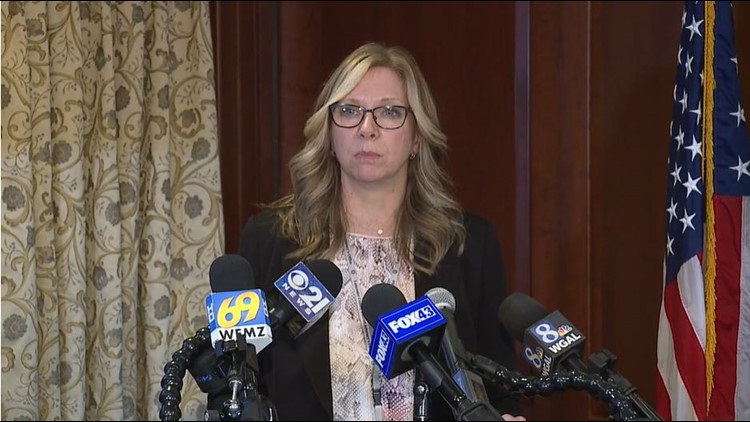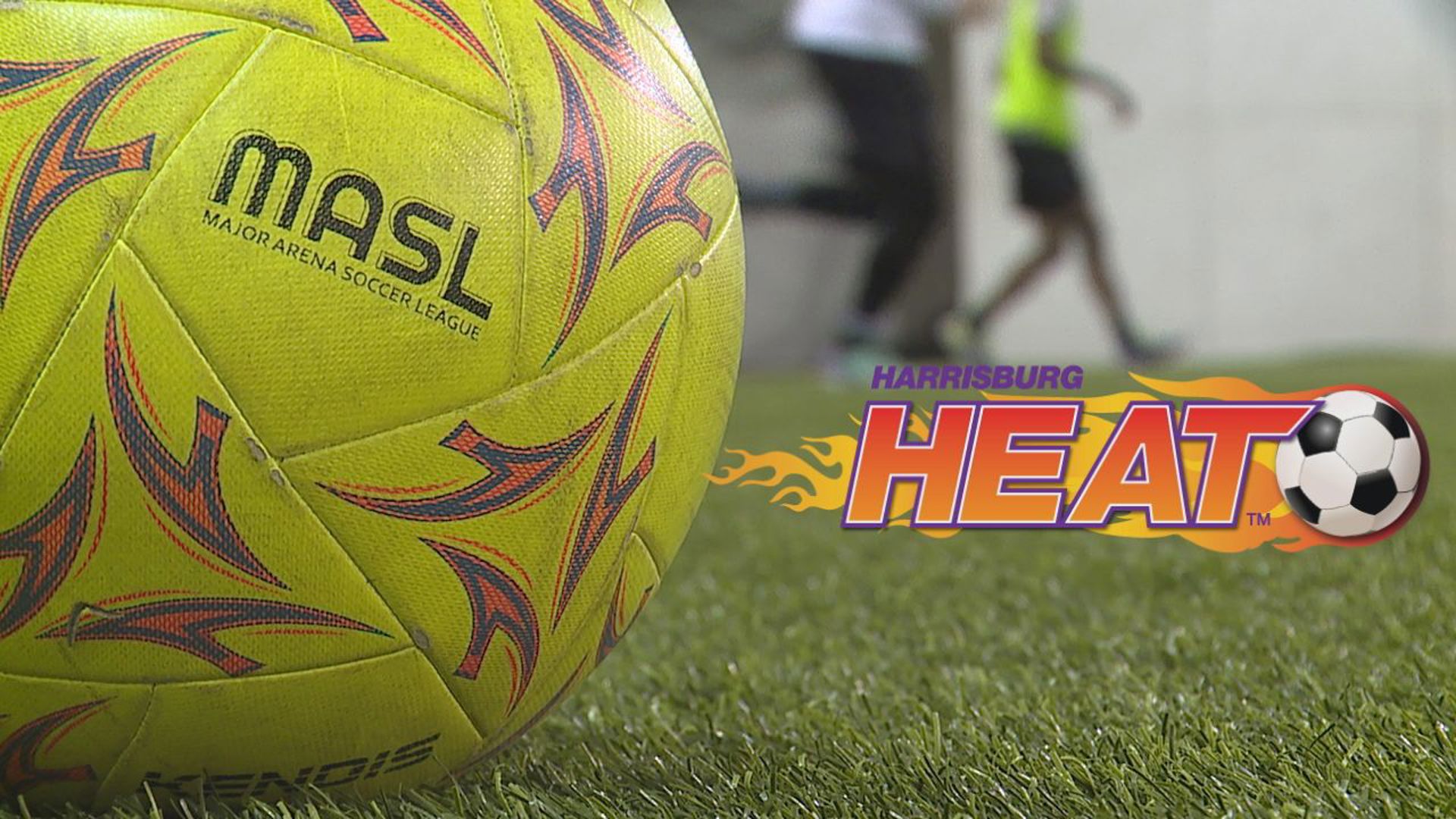LANCASTER COUNTY, Pa. — Lancaster County District Attorney Heather Adams on Wednesday released the results of her investigation into an officer-involved shooting that occurred on April 15 on the Pennsylvania Turnpike in Elizabeth Township.
Adams concluded that the two Pennsylvania State Police troopers were justified in discharging their firearms at the driver of a vehicle that struck one of the troopers as it fled from a traffic stop.
Adams said she reviewed statements from both troopers, police reports, and front and rear MVR footage of the incident -- the only video footage available, since neither trooper was wearing a body camera.
Adams did not identify either of the troopers involved in the incident.
The information reviewed established the following:
- Around 11:35 p.m. on April 15, 2022, Trooper 1 and Trooper 2 were on patrol on the PA Turnpike when they observed two vehicles traveling at extremely high speeds eastbound and in the same direction of travel as them.
- Trooper 1 was driving; Trooper 2 was in the passenger seat. Trooper 1 attempted to close the distance between the suspect vehicles by traveling at speeds up to approximately 120-125 miles per hour.
- Once traffic caused the two suspect vehicles to slow, the troopers caught up with and initiated a traffic stop of both vehicles using lights and sirens.
- The two vehicles were identified as a white Dodge Durango and a dark silver Jeep Grand Cherokee.
- According to the troopers’ statements, the traffic stop was initiated approximately 15 miles from the point they originally saw the vehicles speeding.
- During the traffic stop, the Dodge yielded and pulled over in the right berm; the Jeep did not yield and only stopped in the right-hand lane after Trooper 1 boxed it in by stopping in front of it and straddling both lanes of traffic.
- Trooper 2 stated he opened the passenger side window and motioned for the Jeep to pull over to no avail.
- Trooper 1 and Trooper 2 then exited the cruiser.
- Trooper 1 approached the Jeep while Trooper 2 approached the Dodge.
- Trooper 2 did not approach the driver but initially occupied a space between the middle of the cruiser and the Dodge to maintain visual of both vehicles and Trooper 1, who was fully in a lane of travel at night.
- As Trooper 1 approached the Jeep, he saw the driver looking around with what he described as a “panicked” look and then the front wheels of the Jeep turn left toward his direction.
- Trooper 1 requested the driver, a black male in his 20s with facial hair, produce a driver’s license and then repeated this command. The driver did not produce any documents.
- Trooper 1 then reached into the vehicle and turned off the push-to-start ignition.
- The driver simultaneously asked why Trooper 1 did that and restarted the vehicle, putting it in gear.
- Trooper 1 again requested the driver produce his license and immediately after the car is turned back on, repeatedly requested the driver to put the vehicle in park.
- Trooper 1 then positioned himself in a less dangerous angle from the vehicle as he believed the operator was going to drive toward him.
- As Trooper 1 adjusted his body, the Jeep lunged forward while he was alongside of it and struck him on the right side of his body.
- Trooper 1 indicated that at that moment, he believed he was getting run over by the vehicle.
- Trooper 1 drew his service weapon and fired three rounds at the driver as he feared that he would be dragged by the vehicle or swept under its wheels.
- As the Jeep accelerated away and he realized he was no longer in danger, Trooper 1 stopped firing.
- Trooper 1 reported that as he was putting his weapon back into its holster, he heard several additional shots being fired.
Adams ruled Trooper 1’s use of deadly force justified as the driver of the vehicle clearly placed Trooper 1 in apparent danger of death or serious bodily injury by illegally fleeing a lawful traffic stop and striking the Trooper as he fled.
Adams' review of the incident also determined:
- At all times prior to the first shots fired by Trooper 1, Trooper 2 was located between the cruiser and the Dodge while dividing his attention between the Jeep, Dodge, Trooper 1, and approaching traffic.
- During the traffic stop Trooper 2 did walk toward the back of the Dodge and again toward the front of the cruiser.
- Trooper 2 heard the engine of the Jeep shut off and Trooper 1 yelling but could not decipher what was being said.
- Trooper 2 then noticed the Dodge start to pull out from its parked position on the berm and then heard gunfire while observing the Jeep beginning to drive away.
- Trooper 2 did not see Trooper 1 fire his weapon, or Trooper 1 at all as the Jeep fled, and believed Trooper 1 had either been shot by the Jeep occupants or was run over by the Jeep or both.
- Trooper 2 then fired seven consecutive and rapid shots at the fleeing Jeep, which continued eastbound at a high rate of speed along with the Dodge.
- Trooper 2 stopped firing once he realized the Jeep was gaining further distance, lighting provided by the cruiser was diminishing, and there was an increased risk of oncoming westbound traffic.
- MVR footage showed no oncoming westbound traffic while shots were being fired.
- Trooper 2 stated that because he could not see his partner, he feared that his partner had been shot by the occupant of the Jeep or run over or both and that he fired to prevent the driver’s escape from what he believed at the time to have been a violent felony against Trooper 1 and to prevent further possible injury to others that could occur from a high-speed escape.
- Trooper 2 did not realize Trooper 1 was not shot or seriously injured until he turned his attention to the cruiser, which Trooper 1 had entered and began to pull forward for Trooper 2 to enter.
Adams also ruled that Trooper 2’s use of force was also justified under the law.
After hearing Trooper 1 shouting, and hearing multiple gunshots from unknown origins, Trooper 2 could not see Trooper 1 as the Jeep began to flee the scene, Adams said.
Trooper 2’s belief that Trooper 1 was struck by the Jeep and/or or shot by the occupant was objectively reasonable, according to Adams.
Accordingly, also reasonable was his belief that the use of deadly force was necessary to prevent the perpetrator’s escape as the vehicle was speeding away while in possession of a deadly weapon, that being a firearm or the vehicle itself.
The troopers then radioed the incident to dispatch and despite pursuing the vehicles they were unable to catch up to them.
Additional troopers attempted to initiate traffic stops near the Valley Forge exchange, but the Jeep and Dodge did not yield. The Jeep continued onto I-76 E and the Dodge continued on I-276 E.
Trooper 1 was transported to Ephrata Hospital for treatment of right shoulder pain and was diagnosed with a right shoulder strain as result of the incident.
Within a few days of the incident, PSP Lancaster received information that led to the recovery of both vehicles at a garage in Philadelphia.
The vehicles were forensically processed and confirmed to have been involved in the incident.
PSP Lancaster, with the assistance of PSP Philadelphia, executed multiple search warrants resulting in the recovery of additional evidence pertaining to this incident some of which is pending forensic analysis.
A criminal investigation is ongoing and limited information is being released at this time.
Forensic analysis revealed the Jeep was struck in five areas: the rear windshield which had been replaced after the shooting, the right bumper, the driver’s side front fender, the outside wall of the front driver’s side tire, and the driver door.
The Dodge was not struck nor did either Trooper attempt to fire at the Dodge.
A review of the MVR footage established the following timeline:
- approximately 46 seconds expired between the activation of lights/sirens and the vehicles coming to a stop
- approximately 10 seconds between stopping the vehicle and Trooper 1 requesting a license
- approximately 5 seconds later Trooper 1 turns off the Jeep’s ignition
- the Jeep restarts approximately 3 seconds after Trooper 1 turned it off
- Trooper 1 requests a license twice more and orders the operator to put the Jeep in park twice; this all occurs while the Jeep is restarting, taking approximately 3 seconds
- As Trooper 1 orders the Jeep to be parked a second time, the Jeep starts to lunge forward
- Within approximately 3 seconds the first shots from Trooper 1 are heard, lasting about 1 second
- Within approximately 2 seconds after Trooper 1’s shots, Trooper 2’s shots are heard, lasting about 2 seconds
- As the last shot is fired by Trooper 2, Trooper 1 enters the cruiser and begins to pull forward
Overall, approximately 30 seconds elapsed from the vehicles being completely stopped to the last shot fired, Adams said.



